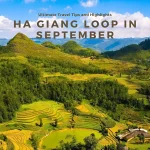When it comes to the most beautiful hiking routes in Vietnam, Ha Giang Loop vs. Hai Van Pass are always the two most mentioned names. Each route has its own beauty, and different challenges, promising to bring visitors unforgettable experiences.
In this article, we will explore more deeply about Ha Giang Loop vs. Hai Van Pass, and how each of these places attracts visitors with its magnificent natural scenery and unique cultural values behind them. We will go through every aspect of each route, from the history, culture, and highlights, to the necessary notes when participating in the journey to these lands. Let’s explore and compare these two journeys with Karst Plateau to find out which masterpiece is more worthy of the battle for natural beauty!
1. Hai Van Pass

Comparison between Ha Giang Loop vs. Hai Van Pass
On the other side of the debate about Ha Giang Loop vs. Hai Van Pass, Hai Van Pass is the natural boundary between Thua Thien Hue province and Da Nang, which not only stands out for its majestic landscape but also one of the most beautiful pass roads in Vietnam. With a length of about 21 km and an altitude of nearly 500m above sea level, Hai Van Pass has become a must-see destination for many tourists.
1.1 History of Hai Van Pass
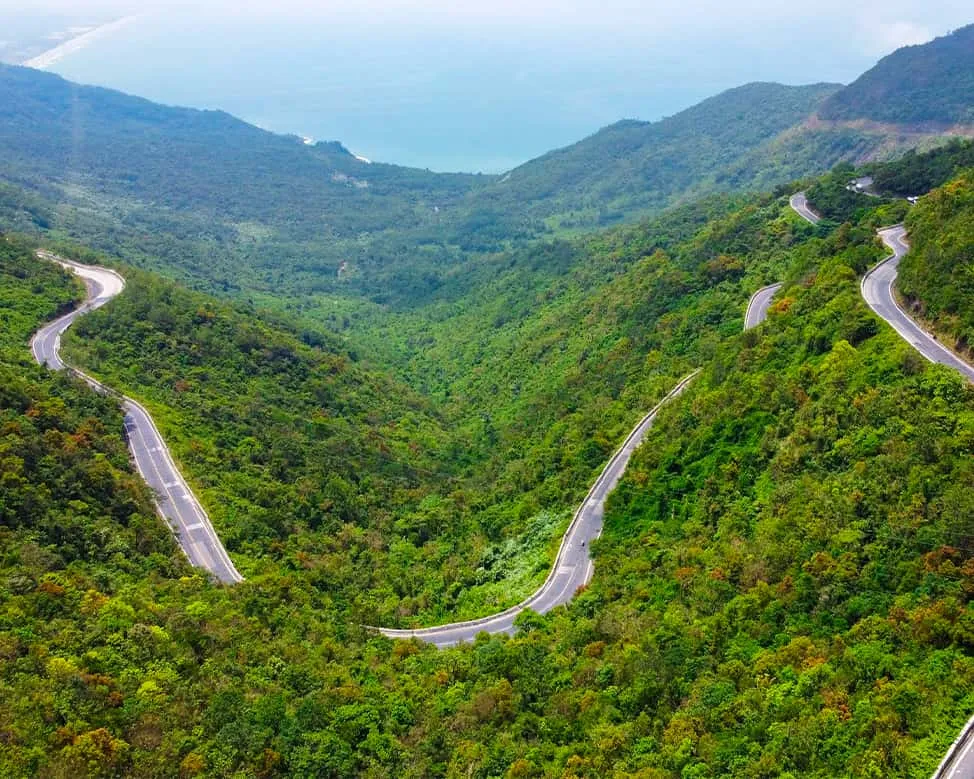
Hai Van Pass is 21km long, winding along the coast
Hai Van Pass not only has natural beauty but also hides rich historical values. In the early years of the 14th century, the pass became part of the border between the Champa and Dai Viet kingdoms. Witnessing the culture and historical dynasties, Hai Van Pass is known not only for its beauty but also for the mysterious stories of the past. Currently, Hai Van Quan, a relic from the Tran Dynasty, is located right on the top of the pass and preserves many cultural and historical values. Hai Van Pass has become a symbol of Vietnam, a place backpackers love exploring.
1.2 Culture on Hai Van Pass
What we always crave the most when exploring a new land is the experiences imbued with local culture. So let’s explore the unique cultural opportunities that Ha Giang Loop vs. Hai Van Pass brings. Hai Van Pass is not only one of the outstanding beautiful scenery but also has a bold cultural imprint. This place attracts visitors not only because of the beautiful scenery but also because of the cultural activities of the locals.
Here, you have the opportunity to learn about the traditions, customs, and daily life of the people in this mountainous area. Cultural activities on Hai Van Pass not only show the unique identity of the land but also the cultural beauty that needs to be preserved and developed.
1.3 Highlights on Hai Van Pass
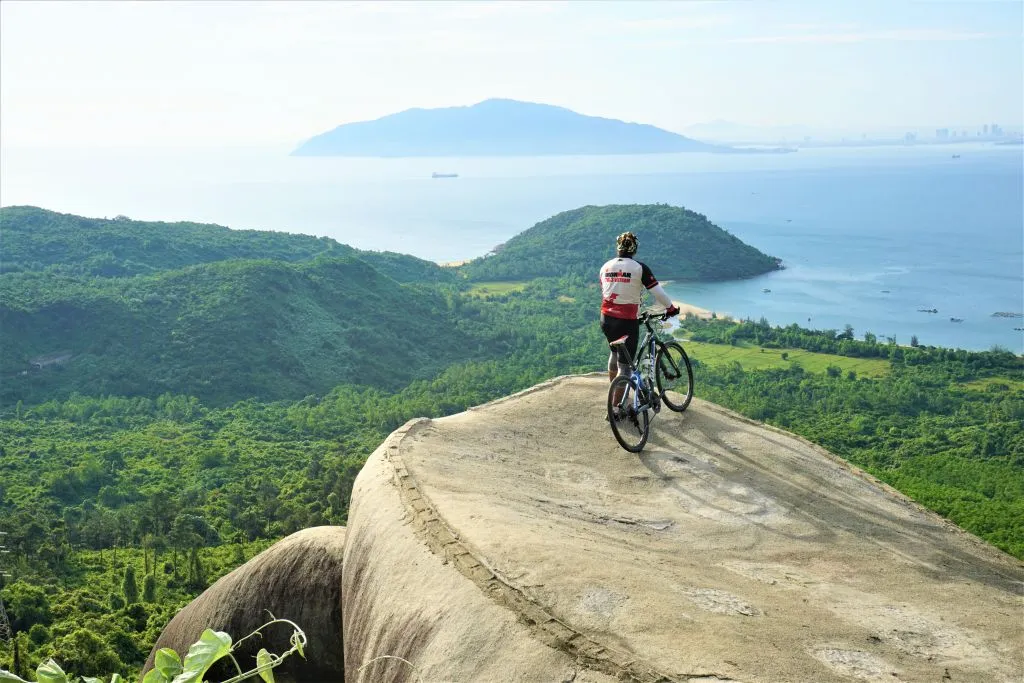
The rock has a protruding shape like the bow of a boat, located precariously at an altitude of 500m above sea level
Although Ha Giang Loop is famous for its majestic landscapes and diverse culture, Ha Giang Loop vs. Hai Van Pass is still an interesting comparison. The Two Van Passes feature beautiful winding roads between the mountains and the sea, providing a breathtaking driving experience. When arriving at Hai Van Pass, visitors will not be able to help but be fascinated by the outstanding attractions. Here, you can admire the magnificent scenery and participate in many exciting activities. Beautiful photo locations such as Hai Van Quan or Hai Van Terrace are meeting points for followers who love to check in.
Some of the highlights:
- Hai Van Quan: A historical relic with unique architecture.
- Lonely Pine Tree: Symbolizes nobility and hope, and is a prominent symbol for those who love to take pictures.
- Cu Rua Rock: An attractive stop to see the panoramic view of the past and the sea.
1.4 Things to know when going to Hai Van Pass
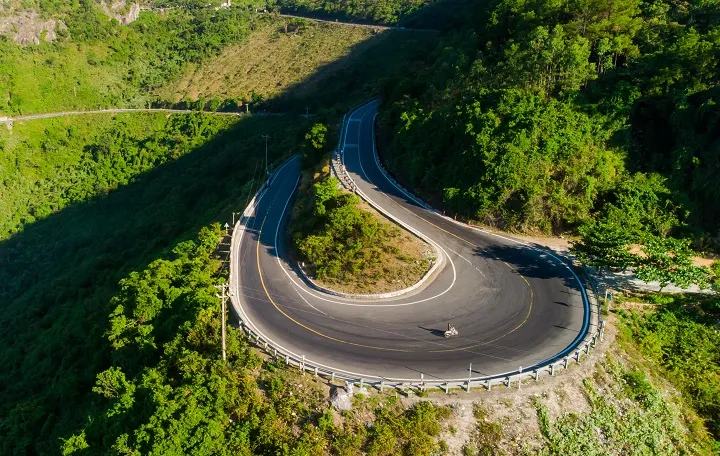
When putting Ha Giang Loop vs. Hai Van Pass side by side, it is undeniable that Hai Van Pass is a favorite destination for many tourists
Before starting your journey to explore this beautiful road, you need to take note of some useful information to have a full and safe trip
Some notes when going to Hai Van Pass:
- Best time: From March to August, the weather is stable, with little rain.
- Transportation: Choose a motorbike or car depending on your needs and preferences.
- Safety Assurance: Technical check the vehicle before departure and concentrate while driving.
1.5 Tips for going to Hai Van Pass
Besides the necessary notes, you should also refer to some useful tips to optimize your experience on Hai Van Pass:
- Bring food: Prepare some snacks and drinks for the long trip.
- Pay attention to the weather: Monitor the weather situation before departure to avoid sudden rains.
- Take photos at sunrise or sunset: The best scenery usually appears at this time, take advantage of it to take good photos.
2. Ha Giang Loop
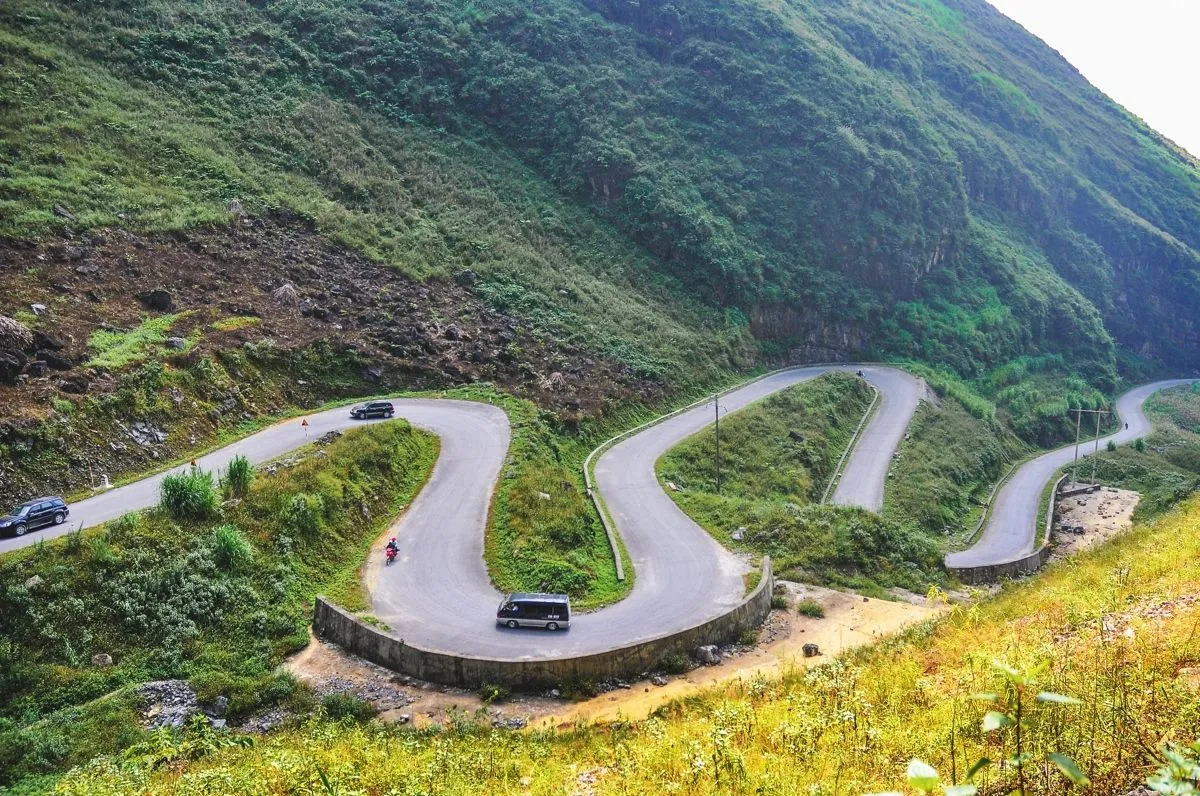
The Ha Giang Loop route is a 350 km long road, winding through mountains, terraced fields, valleys, rivers, waterfalls
The Ha Giang Loop is one of the most famous roads in Northern Vietnam, attracting many tourists because of its amazing scenery and rich culture of local ethnic minorities. The detour is about 350 km long, passing through remote villages with majestic rice fields, mountains, and very attractive stops.
2.1 History of Ha Giang Loop
Ha Giang Loop is still quite new in the tourism map of Vietnam. This route was only opened to tourists in the early 2000s, quickly becoming an attractive destination for those who love to explore and adventure. On this route, you will have the opportunity to learn about the culture and customs of ethnic minorities such as H’Mong, Tay, and Dao, They still preserve the traditional lifestyle, bringing unique experiences to visitors.
2.2 Culture on Ha Giang Loop
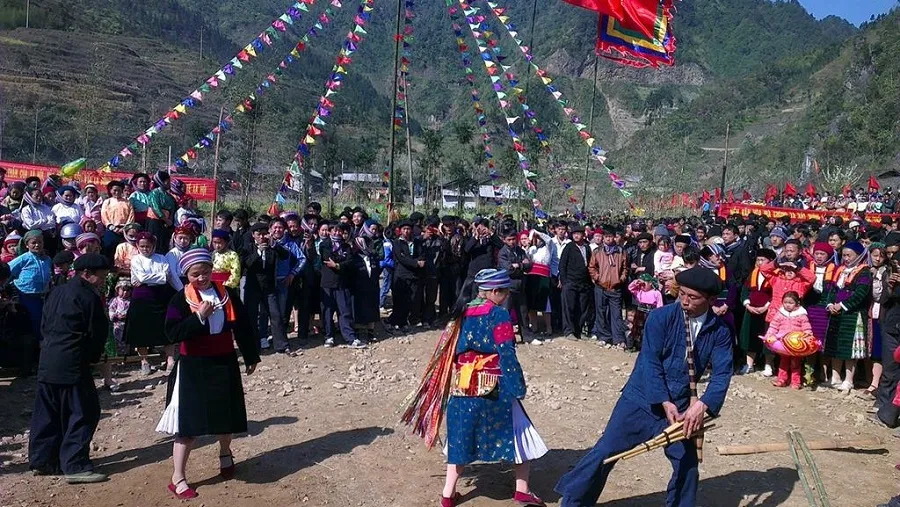
The Gau Tao festival typically takes place from the 1st to the 15th day of the Lunar New Year
When comparing Ha Giang Loop vs. Hai Van Pass, each place possesses its own unique culture, but the diversity and richness of culture in Ha Giang Loop really create the most special attraction. Ha Giang has cultural diversity expressed through many ethnic groups, of which the Hmong, Dao, and Tay ethnic groups are the main groups. The people here still preserve many unique cultural values such as traditional costumes, customs, and house architecture. The Mong people built houses with earthen walls and stone fences, which also created typical images of this land.
Some outstanding cultural activities:
- Traditional festivals: Where people show community cohesion and typical cultural identity. Some typical festivals such as Khau Vai Love Market Festival, Gau Tao Festival, Buckwheat Flower Festival, etc.
- Enjoy local cuisine: Visitors have the opportunity to experience many traditional dishes of ethnic minority people. Some specialty dishes in Ha Giang that you should not miss such as Dried buffalo meat, Thang Co, Bamboo-tube rice, etc.
2.3 Highlights on Ha Giang Loop
When comparing Ha Giang Loop vs. Hai Van Pass, it is undeniable that Ha Giang Loop is loved by many tourists who are passionate about exploring. Ha Giang Loop is not only a tourist route but also a challenge for those who love to explore and experience. The winding passes bring a sense of adventure and excitement to visitors. In particular, the section of Ma Pi Leng Pass is considered one of the four great peaks of Vietnam, with beautiful landscapes and challenging slopes, which is a highlight not to be missed in the journey.
Some of the highlights:
- Ma Pi Leng Pass: Famous for its height and majestic landscape, attracting many tourists.
- Quan Ba Gate of Heaven: A place with a beautiful view for those who love nature.
- Lung Cu Flagpole: The northernmost point of Vietnam, where you can admire the majestic mountains and understand more about the cultural significance here.
- Dong Van Karst Plateau: This is a UNESCO Global Geopark, with overlapping limestone mountains, deep canyons, and stretching plateaus creating wild and magnificent scenery.
2.4 Things to know when going to Ha Giang Loop
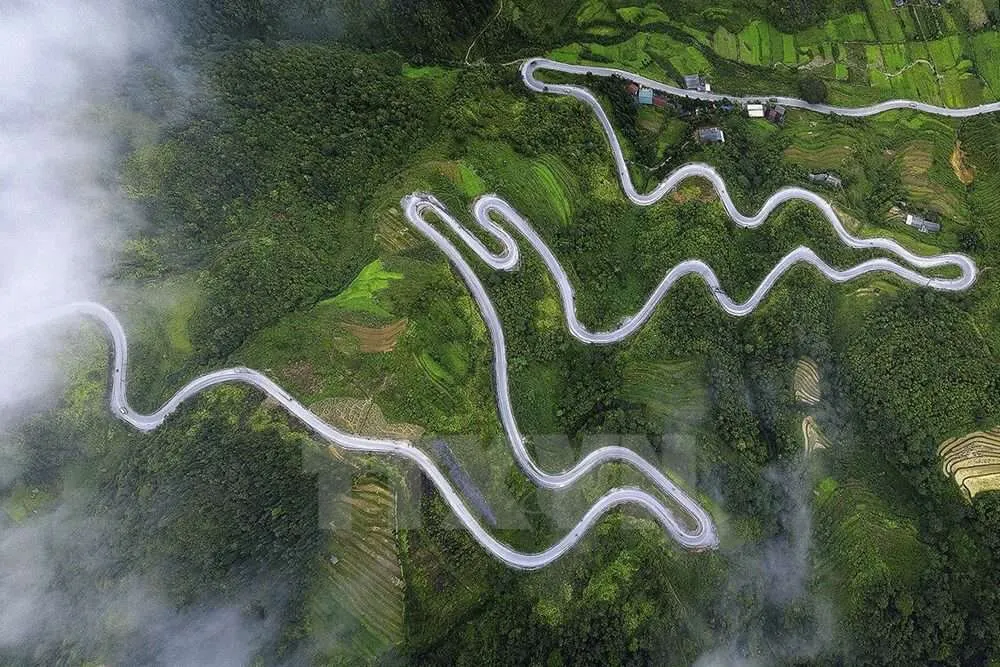
With winding roads and hairpin bends, Ha Giang Loop is perfect for those who love the thrill of riding
Before making a journey to explore Ha Giang Loop, you also need to note useful information so that the trip takes place safely and smoothly
Some notes when going to Ha Giang Loop:
- Best time: From September to November, when the weather in Ha Giang is pleasant you will be able to admire the golden rice fields.
- Transportation: You can rent a motorbike in Ha Giang City to explore on your own or join tours with easy riders.
- Check before departure: Make sure the car is in the best condition before starting the journey.
2.5 Tips for going to Ha Giang Loop
Besides the necessary notes, you should also refer to some useful tips to optimize your experience on Ha Giang Loop
- Download maps offline: Mobile signals in mountainous areas can be unstable, so download maps to use when there is no internet.
- Drivers need a license: Make sure you have an international driver’s permit to avoid getting in trouble with the authorities.
- Pay attention when traveling: The pass has many sharp bends, requiring dexterity and alertness when driving.
3. Which route should I choose?
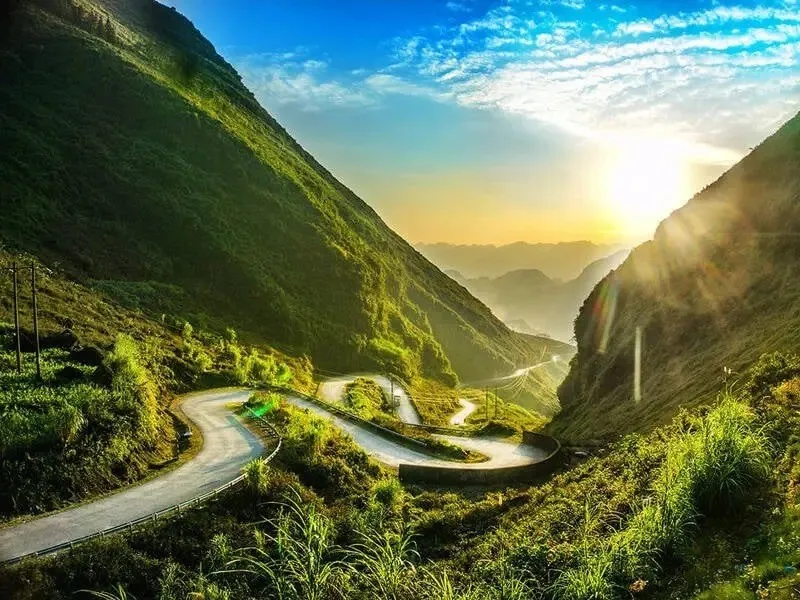
Ha Giang Loop vs. Hai Van pass are both great destinations
When comparing Ha Giang Loop vs. Hai Van Pass, both bring memorable experiences to everyone. However, depending on your personal preferences and needs, you can choose one or the other.
Choose the Ha Giang Loop if you love to explore the national culture and wild and challenging natural scenery. This will be the ideal place for those who like something new and adventurous.
Choose Hai Van Pass if you want to experience a beautiful coastal road with romantic scenery and fresh air. It is also a good choice for those looking for convenience when traveling between Da Nang and Hue.
Both routes of Ha Giang Loop vs. Hai Van Pass are worth exploring, if possible, try both to fully feel the beauty of Vietnam’s nature.
4. Frequently Asked Questions: Ha Giang Loop vs. Hai Van Pass
Can I go to Ha Giang Loop vs. Hai Van Pass on my own?
You can completely go to Ha Giang Loop vs. Hai Van Pass by yourself! You can rent a motorbike or car to get around, with motorbikes being a popular option that gives you the flexibility to explore small roads and beautiful scenery.
The route in Ha Giang Loop is usually steep and bumpy, but the landscape is impressive, so drive carefully. At Hai Van Pass, the path is very beautiful and safe, suitable for even novice drivers. Don’t forget to visit popular stops for photos and sightseeing.
How long does it take to complete the Ha Giang Loop vs. Hai Van Pass?
Let’s compare the length of Ha Giang Loop vs. Hai Van Pass.
The Ha Giang Loop is 350km long, so you usually need about 3 to 5 days, depending on your schedule and the stops you want to explore.
Meanwhile, Hai Van Pass is only 21km long so you can complete it in just a few hours, about 1 to 2 hours if you don’t stop too much. The travel time in Hai Van Pass is much shorter than in Ha Giang Loop, but both offer great experiences for visitors.
When is the best time to take Ha Giang Loop vs. Hai Van pass?
The best time to go to Ha Giang Loop vs. Hai Van Pass may vary.
For Ha Giang, the best time is from September to March next year because this is not only the season of ripe rice, the season of blooming triangular flowers but also the time of spring festivals of ethnic minorities.
As for Hai Van Pass, from March to August. Because at this time the weather is pleasant, the sun is light, there is not much fog or rain. This makes the process of moving smooth and safe. These days also have a very ideal temperature for motorbike trips to explore the pass.
Do I need a special permit to complete the Ha Giang Loop vs. Hai Van Pass?
Regardless of Ha Giang Loop vs. Hai Van Pass, if you want to ride a motorbike anywhere in Vietnam, you will need to have an International Driver’s Permit (IDP) stamped with an A1 stamp. This license is usually issued in your country.
In addition, for some areas in Ha Giang, especially border areas, you may need to register or notify the local authorities, but it is usually not complicated.
Read More: Conquer Hai Van Pass: Vietnam’s Ultimate Road Adventure
Both Ha Giang Loop vs. Hai Van Pass are worth exploring, each with its own stories and beauty. Hai Van Pass not only stands out for its stunning coastal landscape but also for its historical and cultural heritage. Meanwhile, Ha Giang is attracted by the cultural colors of ethnic minorities along with adventurous trips through rugged winding roads. Whichever direction you choose, Ha Giang Loop vs. Hai Van Pass promises magic in the journey to discover the beauty of nature and people in Vietnam. For more information and travel tips in Vietnam, visit the Karst Plateau website.










